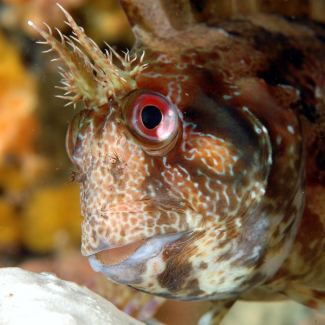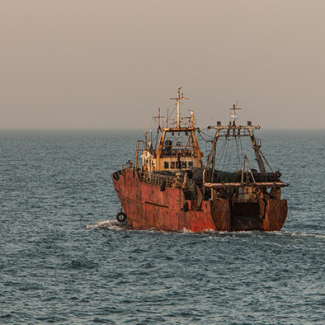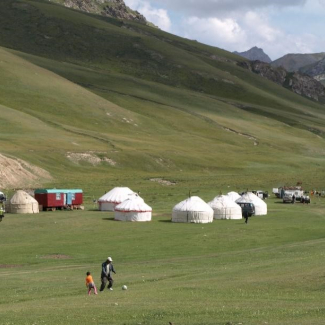
MAGIC 2021: better understanding carbon sources and sinks in the boreal regions
|
|
From 14 to 27 August 2021, a major campaign will take place in northern Norway, Sweden and Finland with the aim of verifying greenhouse gas inventories in this key region for the carbon cycle. Led by the CNRS and the French space agency CNES, the Magic 2021 campaign is also supported by the German (DLR) and European (ESA, Eumetsat) space agencies, and involves 17 teams from 7 countries.
Carbon dioxide (CO2) and methane (CH4) are the two main anthropogenic greenhouse gases, i.e. those emitted as a result of human activity. In order to better understand their distribution in the atmosphere1 and the emissions associated with them, the Magic2 initiative was launched in 2017. Following three preparatory campaigns conducted in mainland France over the past few years, the 2021 campaign will take place in northern Norway, Sweden and Finland. An international consortium of more than 80 scientists will operate a battery of instruments deployed on the ground and aboard twenty balloons, as well as in three research planes acting as airborne laboratories.
This boreal region harbours significant sources of CH4, either caused by human activities (extraction and distribution of gas and oil) or of natural origin (wetlands, peat bogs, lakes, methane hydrates3 ). However, these emissions are poorly quantified, since continuous measurements in the region are rare due to the low population density, the boreal winter, and the weather conditions. In addition, the high latitudes are generally considered to be a sink for atmospheric CO2, although, like natural sources of methane, the latter may be strongly impacted by the rapid warming at these latitudes.
The goal of the Magic 2021 campaign, which will take advantage of the simultaneous launch of the CNES Klimat 2021 stratospheric balloon campaign in Kiruna (Sweden), will therefore be to measure flows of greenhouse gases, and in particular natural and anthropogenic methane emissions. It will also validate observations made by the OCO-2 (NASA) and Sentinel-5P (ESA) satellites, as well as by CNES’s IASI instrument on board MetOp satellites (ESA-EUMETSAT), such as the detection of methane emission hotspots, which observations from space have shown to be located over subpolar lakes.
The data collected will also be used to prepare future French space missions to monitor greenhouse gases, due to be launched in the next few years. These include Merlin (a French-German mission to measure methane, 2027), MicroCarb (a French mission to measure carbon dioxide, 2023) and IASI-NG (a French instrument for the measurement of atmospheric composition and climate equipping Europe's MetOp-SG satellites, 2024). For example, the airborne demonstrator for Merlin developed by the DLR will fly for the first time on board a French research aircraft together with other remote sensing instruments.
In addition to the CNRS and its university partners, the French space agency CNES and the French Aerospace Lab Onera in France, the campaign involves the German space agency (DLR), the Swedish Space Corporation, the Finnish Meteorological Institute, the University of Groningen, King's College London, the British Antarctic Survey, and NASA's Jet Propulsion Laboratory. Funding is mainly provided by the CNES, CNRS and ESA, with a contribution from Eumetsat.
The French organisations involved in the mission are:
- the Laboratoire de météorologie dynamique (CNRS/ENS-PSL/Ecole polytechnique-Institut polytechnique de Paris/Sorbonne Université)4
,
- the Groupe de spectrométrie moléculaire et atmosphérique (CNRS/Université de Reims Champagne-Ardenne),
- the Laboratoire d’optique atmosphérique (CNRS/Université de Lille),
- the Laboratoire d'études du rayonnement et de la matière en astrophysique et atmosphères (CNRS/Observatoire de Paris-PSL/Sorbonne Université/ENS-PSL/CY Cergy Paris Université)4
,
- the Laboratoire de physique et de chimie de l’environnement et de l’espace (CNRS/CNES/Université d’Orléans)
- the Laboratoire des sciences du climat et de l’environnement (CNRS/CEA/UVSQ)4
,
- the Service des avions français instrumentés pour la recherche en environnement (CNRS/Météo-France/CNES),
- the Optics and Associated Techniques Department at ONERA,,
- the Merlin, MicroCarb, and IASI-NG project teams, as well as the Balloon Division at CNES.
To find out more see the Magic initiative website.

Sources of natural emissions (yellow squares): Abisko lake and peatlands, Inari lake, circumpolar region between Kiruna and Sodankylä; sources of anthropogenic emissions (yellow circles): Heidrun, Norne and Svan Idrun platforms in the Norwegian Sea, Meri Pori power station in Finland; measurement stations (red stars): Esrange-Kiruna (release of stratospheric balloons), Abisko-Stordalen (peatlands) and Pallas-Sodankylä (ecosystems and atmosphere).
© CNRS / LMD

For Magic 2021, the aircraft will carry two lidars to calculate the gas flow at the surface. One of them, from the DLR, will measure the CH4 and CO2 column, while the other, from ONERA, will conduct wind measurements. Three atmospheric samplers will be used to carry out extremely accurate measurements of greenhouse gas concentrations. A DLR aircraft and one from the British Antarctic Survey will also be used.
© Claude DELHAYE / Safire / CNRS Photothèque

© Olivier Membrive, 2016

© Cyril Crevoisier

© CNES / Alexandre Ollier
Other illustrative images are available from the CNES photo library and from the CNRS Images Platform. Photos of the Magic2021 campaign will be made available to the media.
Contact
Notes
- In particular their vertical distribution: most measurements are carried out at the surface (<1 km) and a few by commercial aircraft (5-6 km altitude). However, higher altitudes have been less studied.
- Magic: Monitoring of Atmospheric composition and Greenhouse gases through multi-Instrument Campaigns
- Methane hydrates are icy compounds containing methane, and are found in the sediments of the ocean floor.
- These laboratories belong to the Institut Pierre-Simon Laplace (IPSL).


